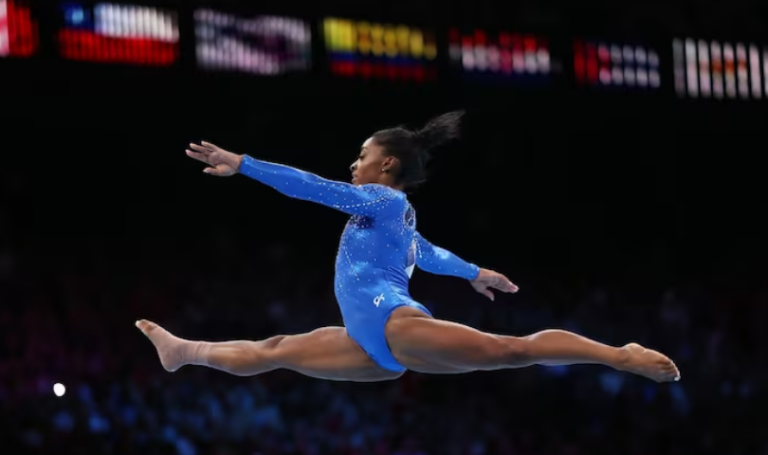It makes no sense to stop a pinwheel from spinning and pull out a single-colored vane for examination, just to see how it works. It makes even less sense to talk about Simone Biles’s gymnastics in terms of her “skill.” That’s there, yes, but it’s the stick to the twirl. When Biles overcomes physics in the air, it’s not a mere matter of technique. Something more phenomenal takes over in order for her to meet gravity with such dalliance. Call it harmony.
The legacy of the greatest gymnast who ever lived, male or female — and that’s what she is after her comeback to win a sixth individual all-around world championship at 26 on Friday — is that her will and her imagination are in perfect league with her body. That’s what makes her soar. And let it be a lesson to everyone who thinks a young woman champion has to be driven to the point of fracture and self-doubt to become great.
So many times, the beauty and artifice of gymnastics obscure stressed bones and split, pressured motives. Two years ago, when Biles suffered that eye-widening case of “the twisties” during the Tokyo Olympics, there were those who called her a quitter for withdrawing from five of six events. Their buried assumption was that a disorder is the necessary price of a gold medal in women’s gymnastics.
Not anymore, not after the exhibition Biles has made in Antwerp, Belgium, over the past week, at once so muscular and lambent and at ease with herself in peacock blue. “It was emotional, and it means everything to me, the fight, everything that I’ve put in to get back to this place, [to] feel comfortable and confident enough to compete,” she said. “It was a lot.”
She initially returned to workouts to stay fit, and her coaches never tried to argue her into a comeback; new competitive leotards just showed up one day, in case she cared to wear them again. Barely two months ago, she made her initial return to competition, and a week ago it might have seemed she was still getting her competitive feet under her. But here’s what happens when Biles is ready and willing to compete:
On the podium, she led a trio of medalists who checked in at 21 or older, flanked by 24-year-old Rebeca Andrade of Brazil and 21-year-old American Shilese Jones. This, too, is part of her legacy — and what a welcome influence. Hopefully it will mean ever-sturdier champions with experience and the ability to stand up for themselves against abusers who may come along, who would bully prom-aged girls into injured acquiescence and make even a gold medalist feel she was letting someone down for simply protecting her own neck.
“Seeing what we’re doing and being more mature, physically and mentally, in the gym, it just gives all the hope in the world that you don’t have to peak at 16,” Biles said a few weeks back, on her return to competition. “Your time is still coming.”
Those who are still coming will have a better time in this wrenching sport because of what Biles has done with her own era.
